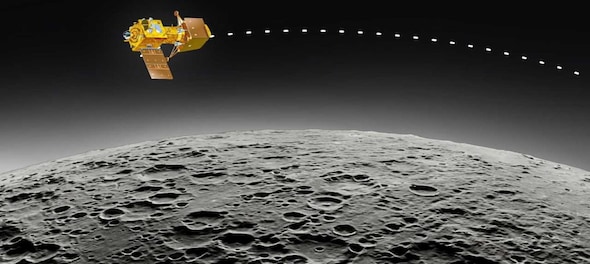
India's Chandrayaan-3 lunar mission has reached a pivotal moment in its journey with the successful separation of the Vikram lander module from the propulsion module on Thursday, August 17. Accompanied by the Pragyan rover, the lander is now set to independently navigate the remaining path to the Moon's surface for a soft landing targeted for August 23.
“LM is successfully separated from the Propulsion Module (PM). LM is set to descend to a slightly lower orbit upon a deboosting planned for tomorrow around 1600 Hrs IST,” the Indian Space Research Organisation (ISRO) tweeted on Thursday.
Chandrayaan-3 Mission:
‘Thanks for the ride, mate! 👋’said the Lander Module (LM).LM is successfully separated from the Propulsion Module (PM)LM is set to descend to a slightly lower orbit upon a deboosting planned for tomorrow around 1600 Hrs., IST.Now, 🇮🇳 has3⃣ 🛰️🛰️🛰️… pic.twitter.com/rJKkPSr6Ct— ISRO (@isro) August 17, 2023
What happens next to the propulsion module?
The propulsion module, a crucial component responsible for ferrying the lander to a secure orbit around the Moon, isn't retiring after its initial task. After having facilitated the lander's journey towards the Moon, the propulsion module's role shifts to a new task — searching for signs of extraterrestrial life on exoplanets beyond our solar system. This endeavour will be undertaken using the Spectropolarimetry of Habitable Planet Earth (SHAPE) payload.
According to the ISRO, the propulsion module will remain in Earth's orbit for extended periods, possibly for months or even years, during which it will engage in spectroscopic studies of the Earth's atmosphere. Additionally, it will measure the polarisation of light emanating from Earth's clouds, contributing valuable insights to atmospheric research.
“The Propulsion Module continues its journey in the current orbit for months/years. The SHAPE payload onboard would perform spectroscopic study of the Earth’s atmosphere and measure the variations in polarisation from the clouds on Earth to accumulate signatures of Exoplanets that would qualify for our habitability!” ISRO said.
Chandrayaan-3 Mission:Meanwhile, the Propulsion Module continues its journey in the current orbit for months/years.The SHAPE payload onboard it would☑️ perform spectroscopic study of the Earth’s atmosphere and☑️ measure the variations in polarization from the clouds on…
— ISRO (@isro) August 17, 2023
Meanwhile, the lander's independent journey to the Moon is progressing as planned, with a soft landing anticipated on August 23. Explaining the concept of a soft landing to Indian Express, Amitabha Ghosh, a scientist involved in NASA's Mars Rover mission, described it as a spacecraft's ability to transition from high-speed travel to a near standstill, all in a matter of minutes and without human intervention.
According to the report, the Chandrayaan-3 lander module has undergone significant enhancements to achieve a successful soft landing. These include reinforced legs or stilts to withstand potentially greater impacts, a greater number of instruments, and updated software with redundancies to manage unforeseen situations. Notably, a larger fuel tank has been incorporated to accommodate any last-minute adjustments that might be required.
Check out our in-depth Market Coverage, Business News & get real-time Stock Market Updates on CNBC-TV18. Also, Watch our channels CNBC-TV18, CNBC Awaaz and CNBC Bajar Live on-the-go!


Punjab Lok Sabha elections: Complete list of Congress candidates
May 18, 2024 4:08 PM
Punjab Lok Sabha elections: Check full list of AAP candidates and constituencies
May 18, 2024 12:59 PM
PM Modi, Rahul Gandhi election rallies in Delhi today: Here are the routes to avoid
May 18, 2024 11:28 AM

